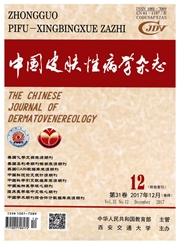

 中文摘要:
中文摘要:
目的探讨等离子体对HaCaT细胞活性、细胞因子表达的影响及作用机制,为其在皮肤创伤愈合的应用提供理论依据。方法CCK-8法测定不同时间等离子体处理对HaCaT细胞活性的影响,流式细胞术检测处理后细胞内活性氧水平改变,并与有NAC存在条件下的改变进行比较;酶标仪检测处理介质PBS中H2O2浓度;采用ELISA及RealtimePCR方法分析等离子体处理后HaCaT生成细胞因子在蛋白和mRNA水平的改变。结果沿面空气等离子体对HaCaT细胞具有细胞毒性,呈剂量-时间依赖性。等离子体处理可升高细胞内ROS水平,NAC能够明显抑制等离子体处理引起的Hacarr细胞活性下降及细胞内ROS水平的增加。与对照组相比,等离子体照射可在不同程度上引起细胞因子IL-1BmRNA水平的增加,可明显增加IL-6、IL-8、VEGF蛋白及mRNA的水平。结论空气沿面等离子可通过提高细胞内ROS水平发挥细胞毒性作用,其一定程度上的促炎作用及促进生长因子的分泌作用可能在创伤愈合治疗中具有重要意义。
 英文摘要:
英文摘要:
Objective To investigate the effects and mechanism of plasma treatment on cell viability and cytokines ex- pression of HaCaT cells and to provide theoretical basis for its application in wound healing. Methods The viability of HaCaT cells exposed to plasma for 0 - 3 rain was measured by CCK 8 assay at 4h ,24h and 48h, respectively. Flow cytometry was used to detect the intraeellular reactive oxygen species (ROS) level and compared the results with that in the presence of NAC. H202 concentration was analyzed by microplate reader. By ELISA and Reahime PCR analysis, the changes of cytokines generated by plasma - treated HaCaT cells were observed in both protein and mRNA levels. Results Surface air plasma had cytotoxicity effect on HaCaT cells with a dose and time dependence pattern. Plasma treatment could increase intracellular ROS level, whereas NAC could significantly inhibit the toxic effect and decrease the intracellular ROS level. Compared with the control, the plasma irradiation could induce the levels of IL-1 [3 mRNA and increase the expression of IL-6, IL-8 and VEGF in both protein and mRNA levels. Conclusion Surface air plasma induces cytotoxicity by enhancing the level of intracellular ROS. The proinflammatory role and the secretion of growth factors may be of a great significance in plasma therapy of wound healing.
 同期刊论文项目
同期刊论文项目
 同项目期刊论文
同项目期刊论文
 期刊信息
期刊信息
